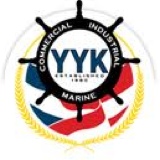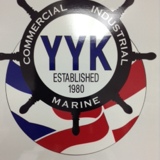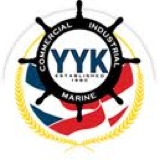Information
-
Document No.
-
YYK Compressed Gas Checklist
-
Client / Site
-
Conducted on
-
Prepared by
-
Location
-
Personnel
-
Are cylinders stored upright and immobilized to prevent from being knocked over? 29 CFR 1910.101(b)
-
Are cylinders stored away from electrical connections, gas flames or other sources of ignition, and substances such as flammable solvents and combustible waste? CGA 3.5.1
-
Are storage facilities for cylinders dry, cool and well ventilated? CGA 3.3.5
-
Are cylinders stored away from incompatibles, excessive heat, continuous dampness or corrosives that may damage them? 29 CFR 1910.191(b) CGA 3.3.7
-
Is the storage area permanently posted with the names of the gases stored in the cylinders? 29 CFR 1910.101(b)
-
Do all compressed gas cylinders have their contents and precautionary labeling clearly marked on their exteriors? 29 CFR 1910.101(b)
-
Are all compressed gas cylinders stored so they do not interfere with exit paths? 29 CFR 1910.101(b)
-
Are cylinders always maintained at temperatures below 125 degrees F? CGA 3.1.12
-
Are charged full cylinders stored away from empty ones? 29 CFR 1910.101(b) CGA 3.3.4
-
Is the bottom of the cylinder protected from contact with the ground to prevent rusting? CGA 3.3.9
-
Are cylinders inspected for corrosion, cuts, gouges, bulges and damage? 29 CFR 1910.101(a)
-
Are cylinders moved, even a short distance, by hand truck? CGA 3.2.6
-
Are cylinders subjected to leak detection using an approved leak detecting liquid? 29 CFR 1910.101(a)
-
Are compressed gases only handled by experienced and trained personnel? CGA 3.4.1
-
Are employees prohibited from using compressed gases to clean clothing or work surfaces? 29 CFR 1910.101(b)
-
Are procedures established for when a compressed gas cylinder leak cannot be remedied by simply tightening the valve? CGA 3.1.6
-
The procedure should include the following:<br>1. Attach tag to cylinder stating it is unserviceable
-
2. Remove the cylinder to well ventilated out of doors location<br>
-
3. If the gas is flammable or toxic, place an appropriate sign at the cylinder warning of these hazards
-
4. Notify the gas supplier and follow their instructions as to the return of the cylinder
-
Add signature
















